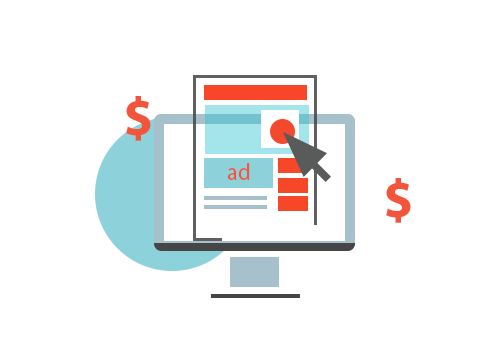Improving the interaction of a website with the search engines and users is the primary task of search engine optimisation. However, there are certain parameters or rules, which are outlined below, that every website owner should follow if you want to utilise the potential of your website to its fullest extent:
Unique & relevant page title
Page Title or Meta Title is the most vital section of a website as far as search engine optimisation is concerned. While choosing a page title, it has to be ensured that it is capable of communicating the message of the website precisely to the visitors. It has to be short, informative, pithy, relevant and unique. Do not stuff it with loads of keywords just for the sake of manipulating the search result.

This listing is a good example of how the page title is optimised for search engines and targeted keywords (i.e. gold coast hotels, gold coast accommodation) are used properly without repeating/stuffing same keyword in the title.
Title tag is the most important elements in on-page optimisation, be sure you done it right.
Make use of the page description
It is used under the meta description tag. It serves as a summary of the entire page. You can use one or two sentences or a complete paragraph for this purpose. Make sure that, you are using unique meta description for each individual page. However, meta description of a page should not be generic, keyword stuffed or irrelevant; otherwise, it might not augur well for that webpage.

Please note that meta description is no longer one of ranking factors that search engines use to determine search rankings. So don’t stuff keywords and compelled description is necessary to encourage your customers/users click on your listing.
Use NOODP & NOYDIR
If your website is listed in DMOZ (OPD) or Yahoo Directory, search engines will use text snippets from those sites as meta description. If these descriptions are not optimised, it can have a significantly negative impact on your click-through-rate.
However, you can prevent search engines from using directories (DMOZ & Yahoo Directory) information by including a robots meta tag like this in <head> section of your web page.
<meta name=”robots” content=”noodp, noydir” />
Use heading tags appropriately
Heading tags (H1 to H6) are used to present heading structure of the page to users. These tags are used by search engines to identify words which are more important than the rest of the page text. Optimising the “H1” and “title” tag will give you a slight boost in search engine placements. Again, do not repeat keywords in these tags, as that will be flagged as spam.
Don’t reuse H1 tag more than once. If necessary, please use H2 and H3 tags for sub-headings.
Relevant keywords
Keywords should be relevant, and they should be in line with the nature of the business. If you are targeting service-oriented keywords, make sure that you have skipped generic keywords as visitors look for information and not service while searching with this set of keywords.
Structure of URLs
Structure of website should be made as user-friendly and search engine friendly as possible. URL should have an organised structure with proper filenames and descriptive categories based on the nature of the business. This will also tell visitors where they’re at your website. Long URL and Cryptic URLs should be avoided because people tend to forget them.
Engaging 404 Page
Users can land on a page of a website that no longer exists. Broken link or wrong URL can trigger this thing and therefore, a website needs to have a custom 404 page that will redirect users to a working page and this will certainly have a positive impact on the online presence of a website.

Content is the King
Content of a website should be written for the users and not for the search engines. You can blend keywords in them, but this should not be at the cost of the flow of the writing. It has to be unique, informative, keyword rich and easy to read.
Optimization of images
As search engines cannot see images or crawl images, you need to give them distinct filenames along with proper “alt tag” attributes. Search engines will rank them in their image search results depending on the relevancy of “alt tag” and other associated factors.
Good use of robots.txt
Robots.txt file tells a website whether to index or not to index a particular page. It has to be placed in the root directory of a website.
Social Media Profile
 Do not forget to join different social media sites like Facebook, MySpace, and Twitter etc. Start building your fan followers there, and create your own community thereafter.
Do not forget to join different social media sites like Facebook, MySpace, and Twitter etc. Start building your fan followers there, and create your own community thereafter.
Regular Blogging
When you have done with the above-mentioned suggestions, you should launch an online marketing campaign for bolstering your website’s online presence. You can create a blog and start posting on it on regular basis.
And one more thing, try to get as many back links from relevant and high authority websites as possible. Duplicate content doesn’t cause your site to be penalized. If duplicate pages are detected, one version will be returned in the search results to ensure variety for searchers.
Ready to work with us?
Hire a professional team and get your project done efficiently.
or call us on +95 9 8989 460 15
Recent Posts
- TikTok Introduces Search Ads with Keyword Targeting: What You Need to Know
- YouTube Takes on AI Deepfakes with New Detection Processes
- Boost Your Website Traffic with These Content Ideas
- Top 5 Useful AI Tools
- How to Gain Followers on TikTok
- The Advantages and Disadvantages of Using a VPN
- 5 Social Media Marketing KPIs to Track for Success










Social Media Management
Social media marketing or management refers to the process of gaining traffic or attention through social media sites. We help brands use it to connect in meaningful ways.